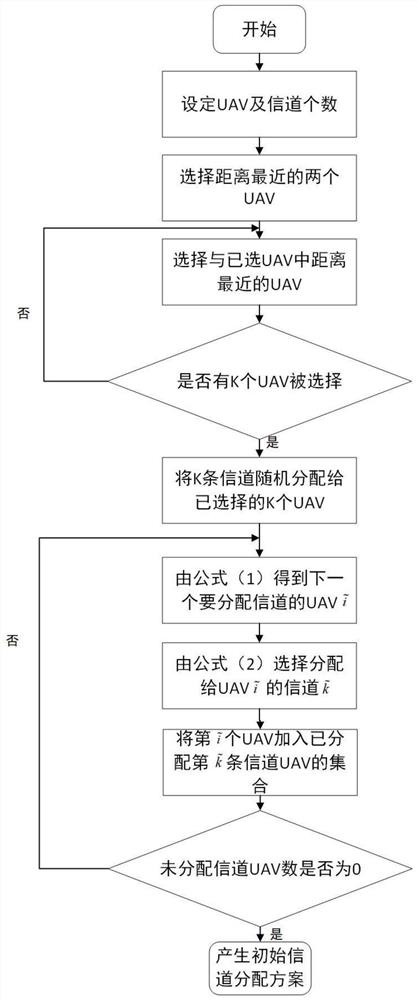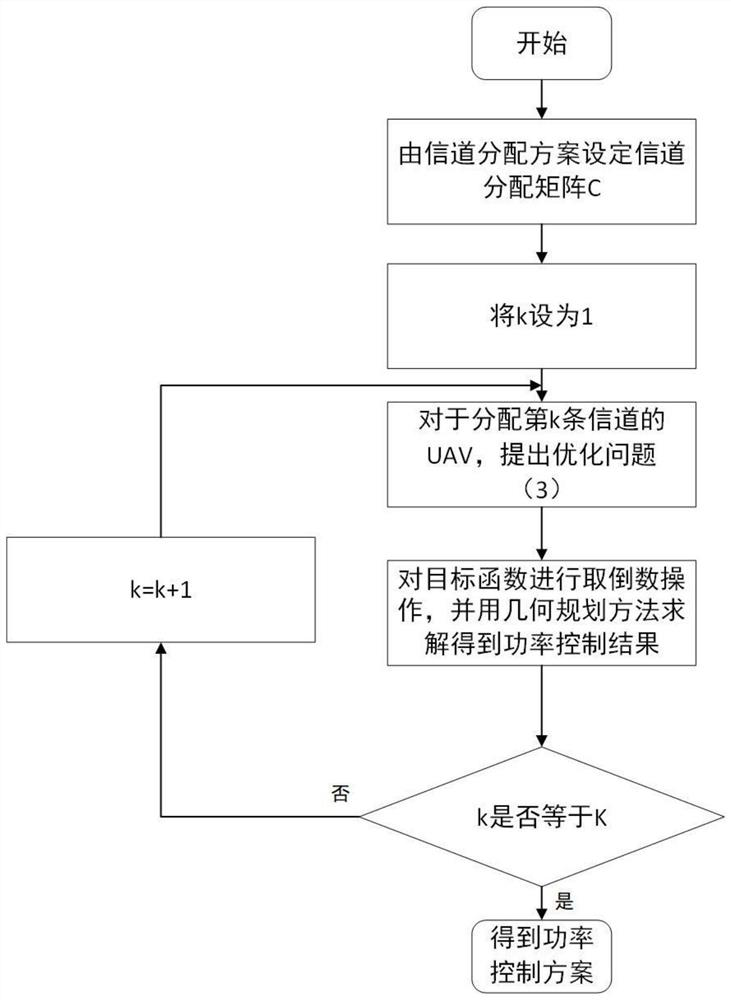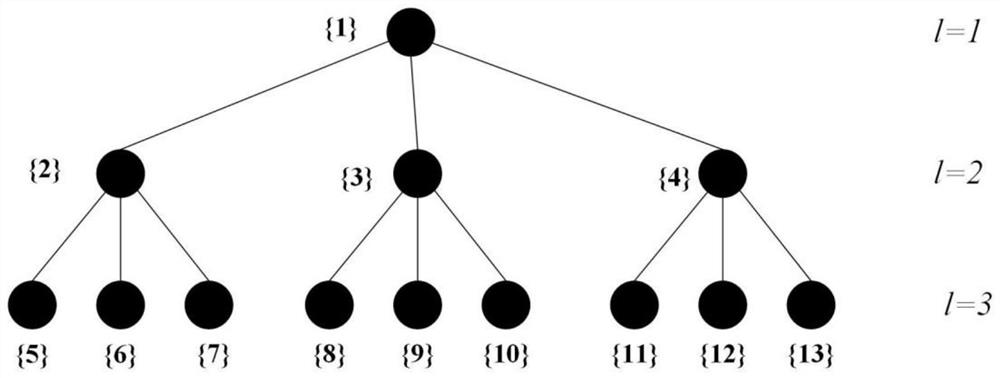UAV network radar interference suppression method based on resource allocation and power control
A technology of power control and resource allocation, applied to radio wave measurement systems, instruments, etc., can solve problems such as mutual interference, co-frequency interference, and reduced target detection performance
- Summary
- Abstract
- Description
- Claims
- Application Information
AI Technical Summary
Problems solved by technology
Method used
Image
Examples
Embodiment 1
[0069] This embodiment elaborates in detail the steps when the UAV network radar interference suppression method based on resource allocation and power control of the present invention is implemented under different numbers of UAVs.
[0070] This embodiment considers that UAVs are randomly distributed in an area of 2km*2km, and each UAV is equipped with a radar sensor to sense non-cooperative targets while avoiding collisions; UAVs transmit radar signals and use echo signals for radar detection. Due to limited spectrum resources and good distance Resolution requirements, some UAVs will be allocated the same spectrum resources. In this case, there is interference between different UAV radar sensors, and the interference increases with the increase in the number of UAVs. For this reason, resource allocation and power control based on UAV network radar interference suppression method to suppress the same frequency interference between UAVs;
[0071] figure 1 It is a flow chart...
PUM
 Login to View More
Login to View More Abstract
Description
Claims
Application Information
 Login to View More
Login to View More - R&D
- Intellectual Property
- Life Sciences
- Materials
- Tech Scout
- Unparalleled Data Quality
- Higher Quality Content
- 60% Fewer Hallucinations
Browse by: Latest US Patents, China's latest patents, Technical Efficacy Thesaurus, Application Domain, Technology Topic, Popular Technical Reports.
© 2025 PatSnap. All rights reserved.Legal|Privacy policy|Modern Slavery Act Transparency Statement|Sitemap|About US| Contact US: help@patsnap.com



